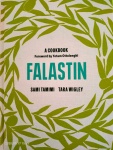It is that time of year when all things seasonal take over, take time, take planning. If I get it right then the rewards are satisfying, heartwarming, joyful and fun. If I get it wrong… well there is always next year (hopefully). At the moment there is, however, still time to get diverted along the way and find all sorts of unexpected stories, snippets and recipes. And, although I was meant to be making plain, straightforward shortbread, I got waylaid on the way by the lovely story of Nankhatai.
Nankhatai is an Indian eggless shortbread whose origins date back to the late 16th century during the time when India and the Dutch were important spice traders. At that time, in the city of Surat in Gujarat, Western India, a bakery had been set up by two Dutch men to cater to Surat’s Dutch population. When the Dutch left India, this bakery was given to an employee, a Parsi man named Faramji Pestonji Dotivala. Bhakti Menon of wicked spoon confessions says, that unfortunately, the bread was unpopular with the local population due to the use of palm toddy (for fermentation) and eggs, neither of which appealed to the local palate. To recover losses, the unsold dried bread was sold at lower prices. The poor often dunked it in their tea. This dried version became known as the ‘Irani Biscuit’. The baker, sensing an opportunity and with improvisations over a period of time, started making cookie shaped biscuits eventually called – nankhatai. To do this, he combined a local sweet of Surat called Dal, with Dutch and Iranian baking techniques. The popularity of nankhatai grew and it was exported to Mumbai. The city housed a large number of Gujaratis and it soon became a tea time staple.
According to some historians, the word Nankhatai combines ‘nan’, the Persian word Nann meaning bread, with ‘khatai’ which is an Afghan word meaning biscuit. On the other hand some say that ‘khatai’ means six as the original Nankhatai used six ingredients. Still others say the word means ‘Bread of Cathay’, the old name for China.
These biscuits can be seen being made by hawkers in places as disparate as the North Indian areas of Punjab, Haryana, and Delhi, as well as in Iran and Afghanistan. Ownership in the culinary world is often a disputed territory and an article by Aamir Yasin from 2015, in Dawn News tells us that:
‘Muhammad Bashir, who bakes Nankhatai in Sarafa Bazaar shrugged off the question about the origins of the word Nankhatai. “What’s in a name? People like to eat Nankhatai at breakfast and tea time, so we make it,” he quipped. A Nankhatai seller at Banni Chowk, Muhammad Zubair, asserted that Nankhatai is a Kashmiri food as it is most commonly made by people from Kashmir and Amritsar. “We may not be sure about the origins of Nankhatai but we have been making it in Rawalpindi for the last 40 years,” he said.‘
The original recipe is said to have used six ingredients – clarified butter, palm wine, flour, sugar, eggs, and almonds. Today, the Nankhatai combines semolina, butter and fine wheat flour. The biscuits are often topped with egg wash glaze, cherries, jam tops and nuts before being popped in the oven. There is even a chocolate version.




Street made Nankhatai 
Chocolate Nankhatai 
Jam topped Nankhatai
Nankhatai has also been written of as the dying biscuit. Mohit Balachandran (@ChowderSingh), in 2015, wrote:
The traditional Indian biskoot is a dying tradition, fast being replaced by the likes of the dunkin’ Oreos and the constipation-curing McVitties and it doesn’t really help if our Bolly-stars like Bipasha-di and Hrithik-ji are putting their entire weight behind either the ‘phoren’ or the ‘desi’ conglomerates. I’m not sure if the humble nankhatai-wala can hold out for long against the marketing blitzkrieg unleashed by the big companies. And if that’s not enough, come January 26th and every other major festival the cops start harassing the nankhatai-wala to shut shop early. Not to mention that their battle against the Municipal Corporation of Delhi is ongoing and all year round.
So, it looks as though the humble nankhatai needed some support and promotion. Perhaps the commercialization of this product may be the saving of it. In 2016 Continental Biscuits Limited (CBL) launched Bakeri Nankhatai with the objective of making nankhatai easily accessible all over Pakistan. A CBL representative noted that, ‘While nankhatai is popular in Pakistan, it is limited to certain bakeries and geographical locations, mainly in Punjab. With this launch, CBL aims to make the product available nationwide. Going forward we aim to make our product relevant to a younger audience and strengthen their association with this traditional product.’

But this week’s recipe is for the traditional, home-made, Nankhatai. Enjoy.

Weekly Recipe














